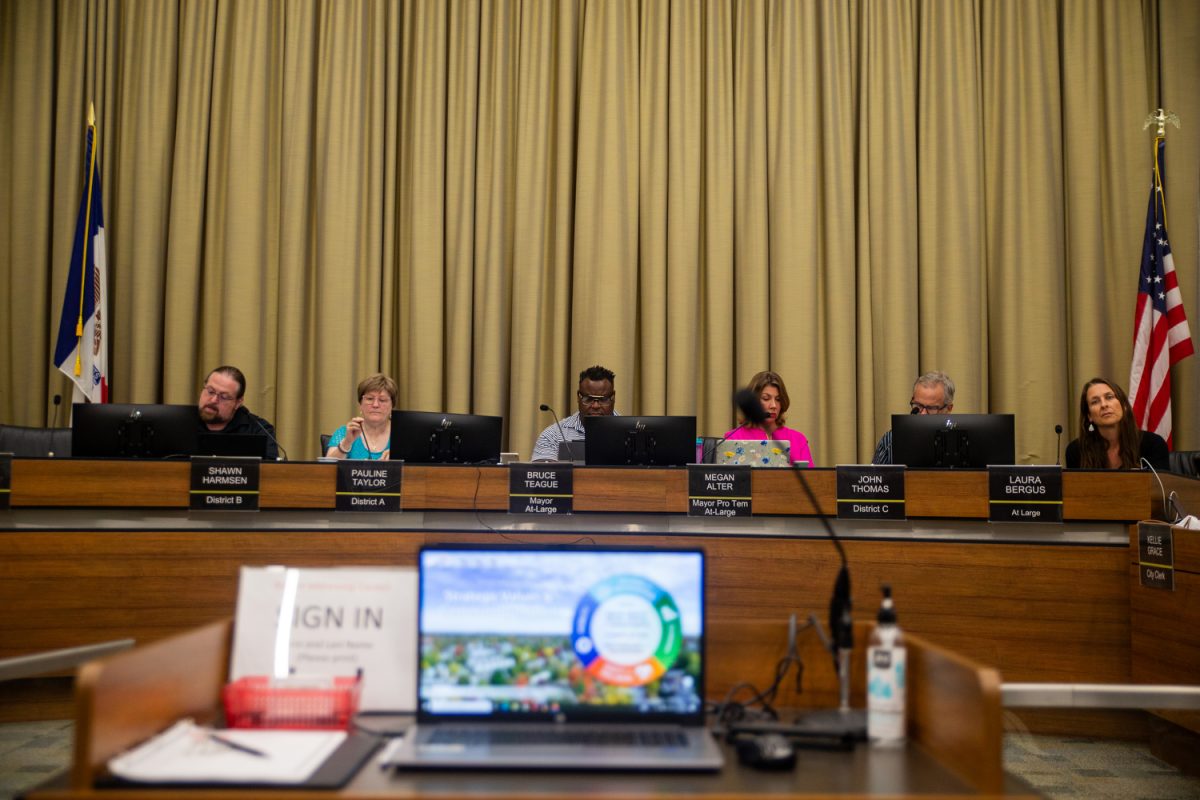New residential single-family and duplex buildings constructed in Iowa City’s northside will now have a height limit of 27 feet as opposed to 35 feet to maintain neighborhood consistency and affordability.
This change to the area’s code was approved at the Jan. 16 Iowa City City Council meeting. The amendment was originally proposed in August 2023 by members of the Northside Neighborhood Association.
Jim Throgmorton, chair of the association and former mayor of Iowa City, said the process first began in spring 2023 when members of the association contacted city staff with an interest in pursuing the height limit reduction.
The idea for the change from 35 feet to 27 feet came after individually measuring each single-family and duplex building in the Northside area, Sharon DeGraw, co-chair of the Northside Neighborhood Association, said. After doing so, she said the group realized that the majority of these types of residential neighborhood buildings are 27 feet or shorter.
Making sure that residential buildings could not be higher than the 27-foot threshold would ensure that no houses or duplexes in the area disrupt the character of the neighborhood, DeGraw said.
This change could also potentially help the city’s housing affordability problem, Throgmorton said. If a developer demolished a 27-foot building to build a larger 35-foot one, they could potentially force out people who cannot afford to rent or purchase a larger building, he said.
This amendment went through the city’s Planning and Zoning Commission in the summer and early fall of last year. When an amendment or rezoning is voted upon by the commission, it then goes to the city council, which takes into consideration how the commission voted and what its recommendation actions are.
The Planning and Zoning Commission ultimately voted 4-3 against this change at its Oct. 18 meeting, which mirrored city staff’s recommendation to the commission. In an interview with The Daily Iowan, Anne Russett, the city’s senior planner, said staff had a multitude of concerns about lowering the height limit.
The first concern was that nearly 75 percent of the area affected by this change is already protected by the city’s historic preservation regulations, meaning they are already protected from potential demolition by a developer, Russett said.
Out of 500 total properties that could be impacted by this change, only 125 are not already protected by a historic zone, she said.
City staff also saw that historically, building height does not seem to be an incentive for redevelopment. Russett said there has not been much redevelopment and demolition in the zone at all: since 1992, there have been just 17 demolitions, she noted. Out of those 17, 11 were redeveloped into new buildings — nine of which are 27 feet or less, she said.
The final concern is that the code could create confusion with existing buildings over the new 27-foot limit, Russett said. If the owners of the newly impacted buildings ever wanted to add an addition onto their house or had to rebuild for some reason, the new regulations put upon them could create confusion and complication for residents as well as city staff, she said.
RELATED: IC City Council adopts lower height limit for residential buildings in northside
When this amendment eventually reached the city council, councilors felt differently than city staff and the Planning and Zoning Commission. At the Dec. 12 city council meeting, Councilor Megan Alter said she supported the height limit reduction because it would be in the best interest of protecting the small number of buildings not covered by the historic preservation zone.
“I do think that it fits best for a 27-foot height requirement,” Alter said. “Hopefully the burden on staff will be less than anticipated.”
Next to Iowa City, the City of Coralville’s zoning code states that a single-family residential building can be as tall as 40 feet.
The council passed the change in a 6-1 vote on Jan. 16, with Mayor Bruce Teague voting against the change and Councilor Josh Moe abstaining from the vote. Teague said on Dec. 12 that his opposition stems from his concern that this change will block the neighborhood from having diverse housing types and equitable access to housing within it.
Now that all is said and done with the change, DeGraw, the co-chair of the Northside Neighborhood Association, said it felt good to work together with city staff and the city council throughout the whole process, even if it was a long one.
“I see it as a messy process, but it’s good for the city staff [and] for all the stakeholders to listen to the different viewpoints and allow the messiness to happen,” DeGraw said. “Because then you can come up with better solutions as a result, and better working relationships with everyone.”



